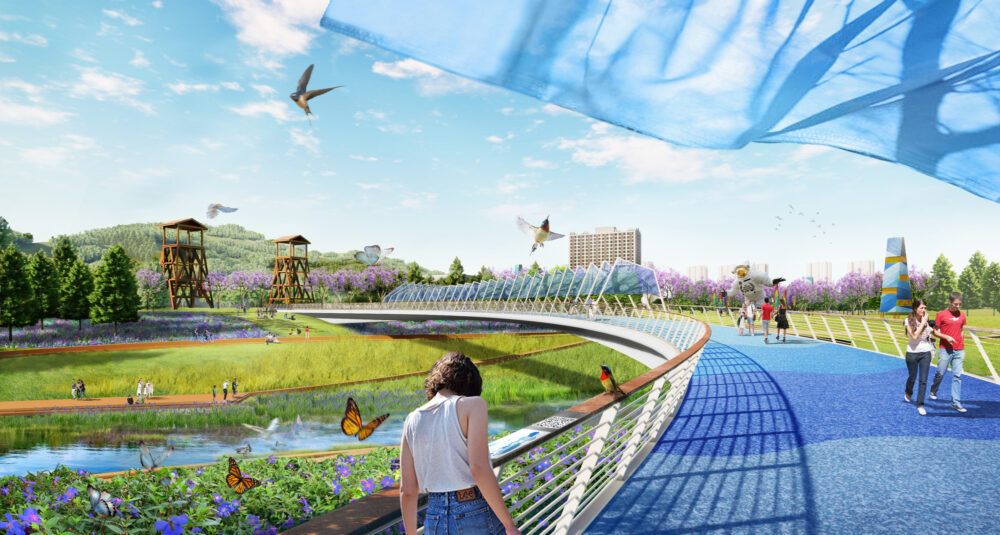
Pingshan River Blueway
Shenzhen, Guangdong Province, China
 Sasaki
Sasaki
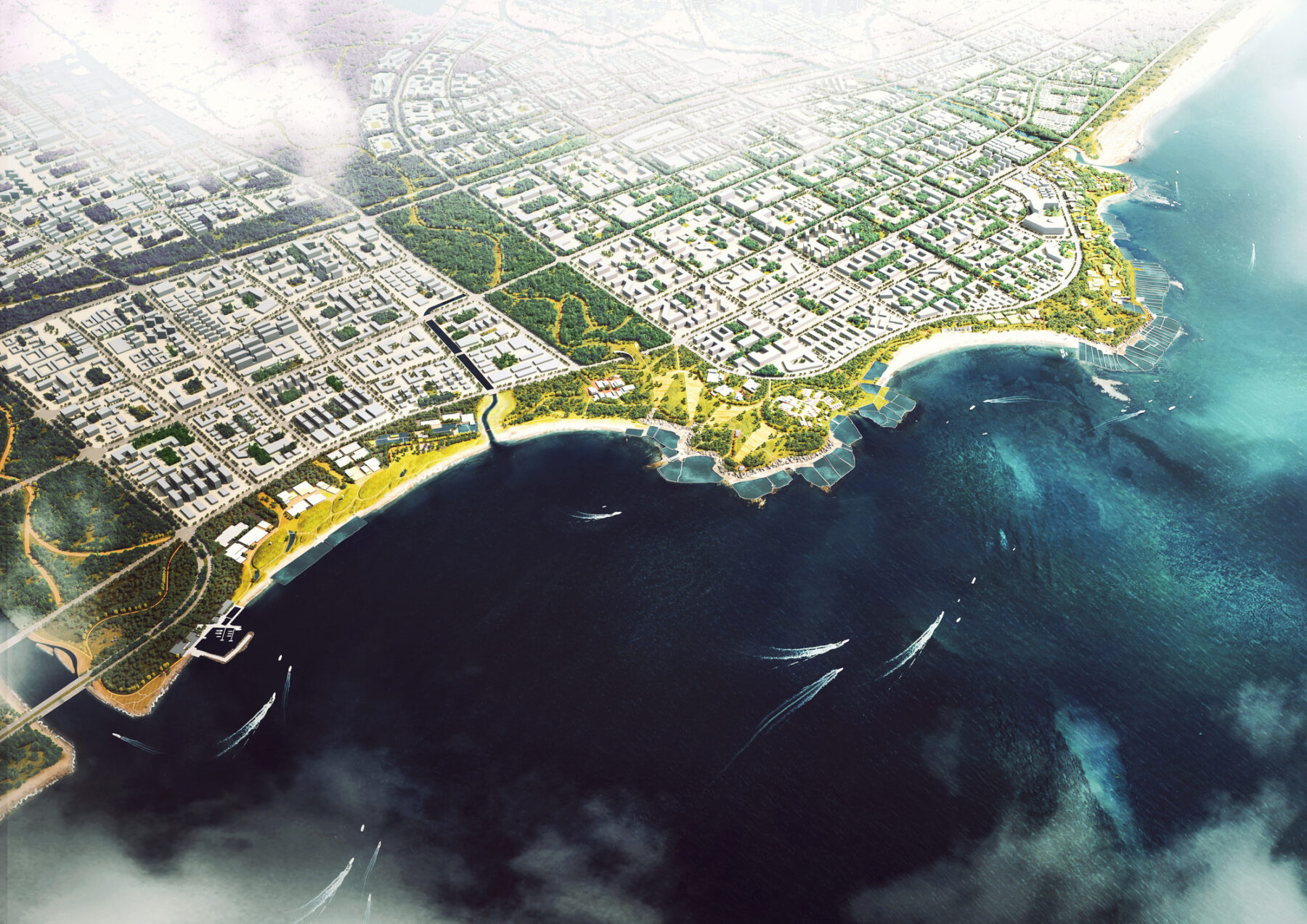
Bird’s eye view of Huangshi Bay Coastal Park
For centuries, Huangshi Bay’s unique natural setting has made it an ideal and significant marine habitat and fishery in China. However, over the past 40 years, the uncontrolled growth of aquaculture industries has completely transformed the shoreline, resulting in public inaccessibility and irreversible ecological degradation. Located along China’s east coast, the Huangshi Bay shoreline is now susceptible to various natural disasters, with rising sea levels further weakening the site’s coastal resilience.
To improve the site’s resilience and celebrate its rich fishing heritage, Sasaki’s master plan for a 981-acre coastal park integrates the restoration of marine ecosystems with an upgrade of aquaculture industries and introducing recreational programs into a multi-layered system. Protecting the site against environmental risks while ensuring cultural and economic success, the plan positions Huangshi Bay Coastal Park as an innovative model for coastal rehabilitation in China.
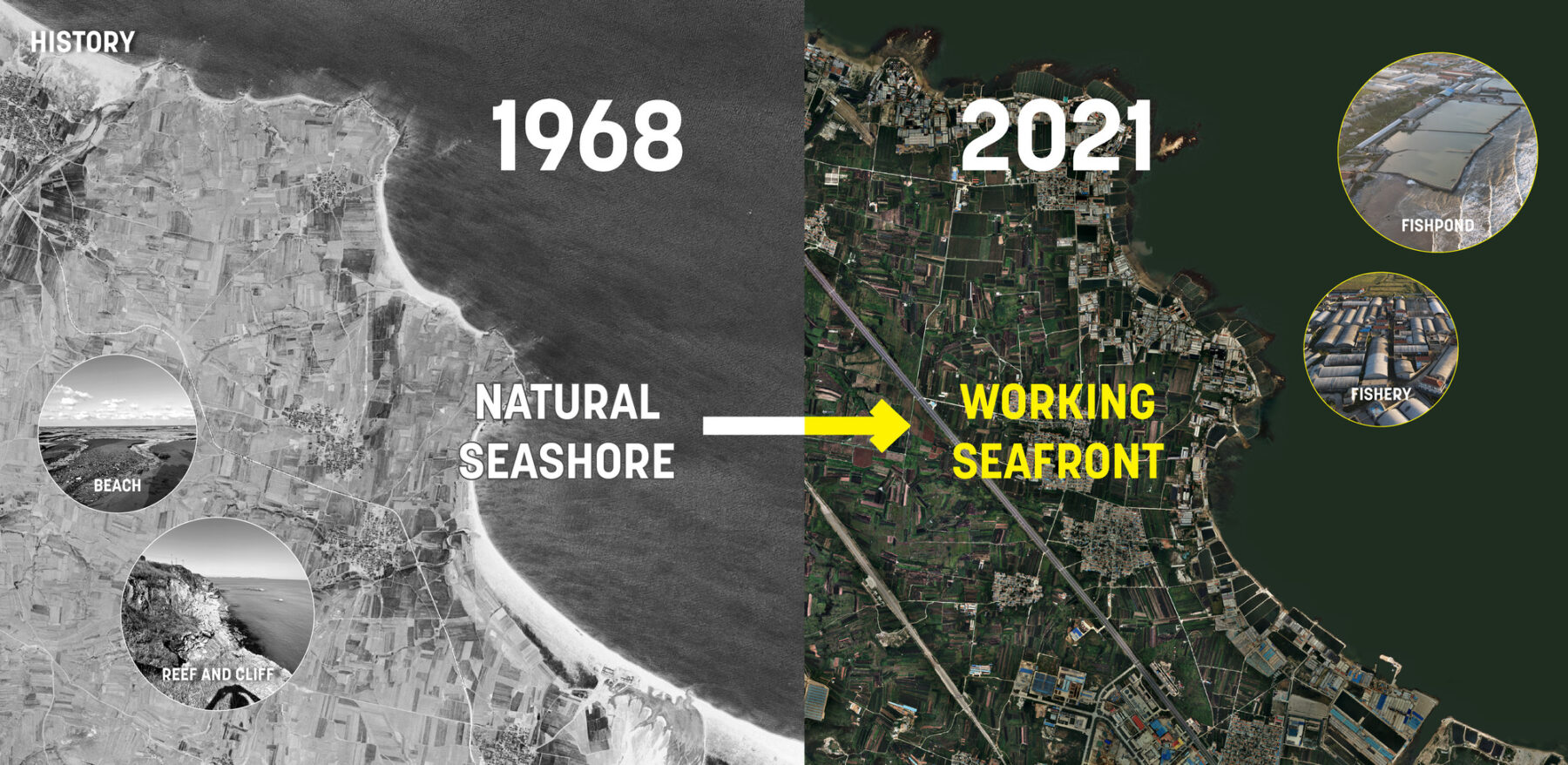
The transformation from natural shoreline to a spontaneous working seafront reduced the site’s accessibility and resilience
Adjoining the Yellow Sea in northern China, the Huangshi Bay shoreline is primarily composed of natural cliffs and beaches. A confluence of ocean currents brings an abundant supply of bait and mild water temperatures all year round, cultivating the ideal habitat for marine life and migratory birds. These natural conditions have sustained the fishing industry and defined the spatial and spiritual characteristics of the region for generations.
The site is currently not only one of the most important marine germplasm bases for shellfish, sea cucumbers, and edible fish in China, but also home to five out of a total of fifteen national-level large-scale sea cucumber nurseries in Shandong Province, substantially supporting the local economy. Despite its economic benefits, the spontaneous growth of aquaculture has led to inefficient land use and loss of public space, along with a deteriorated ecosystem and fragmented coastlines. Aquaculture structures have replaced the natural edges of the coastline and physically reshaped its spatial characteristics.
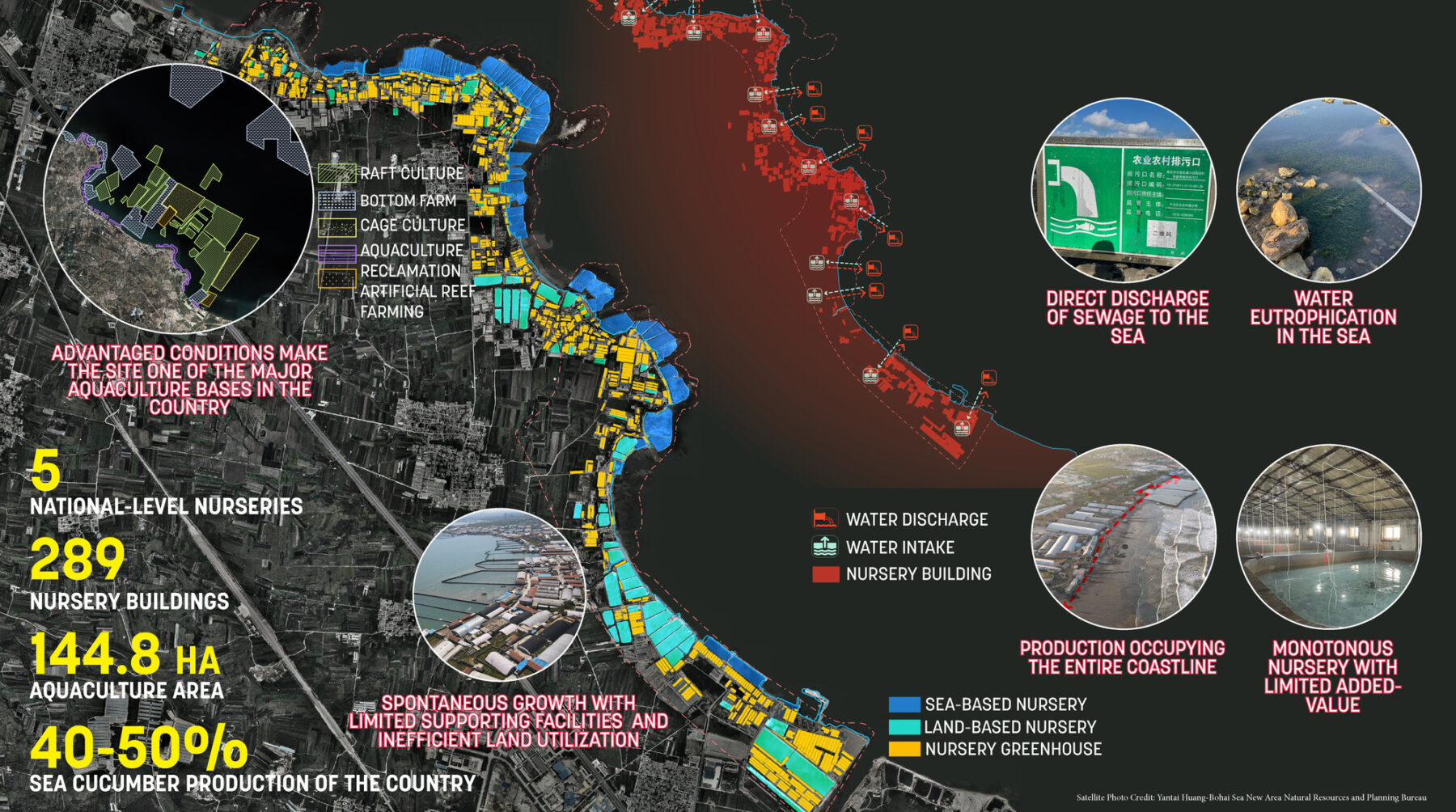
Although the marine nursery industry has been vital to the local economy, it is equally intrusive to the coastal environment and public access.
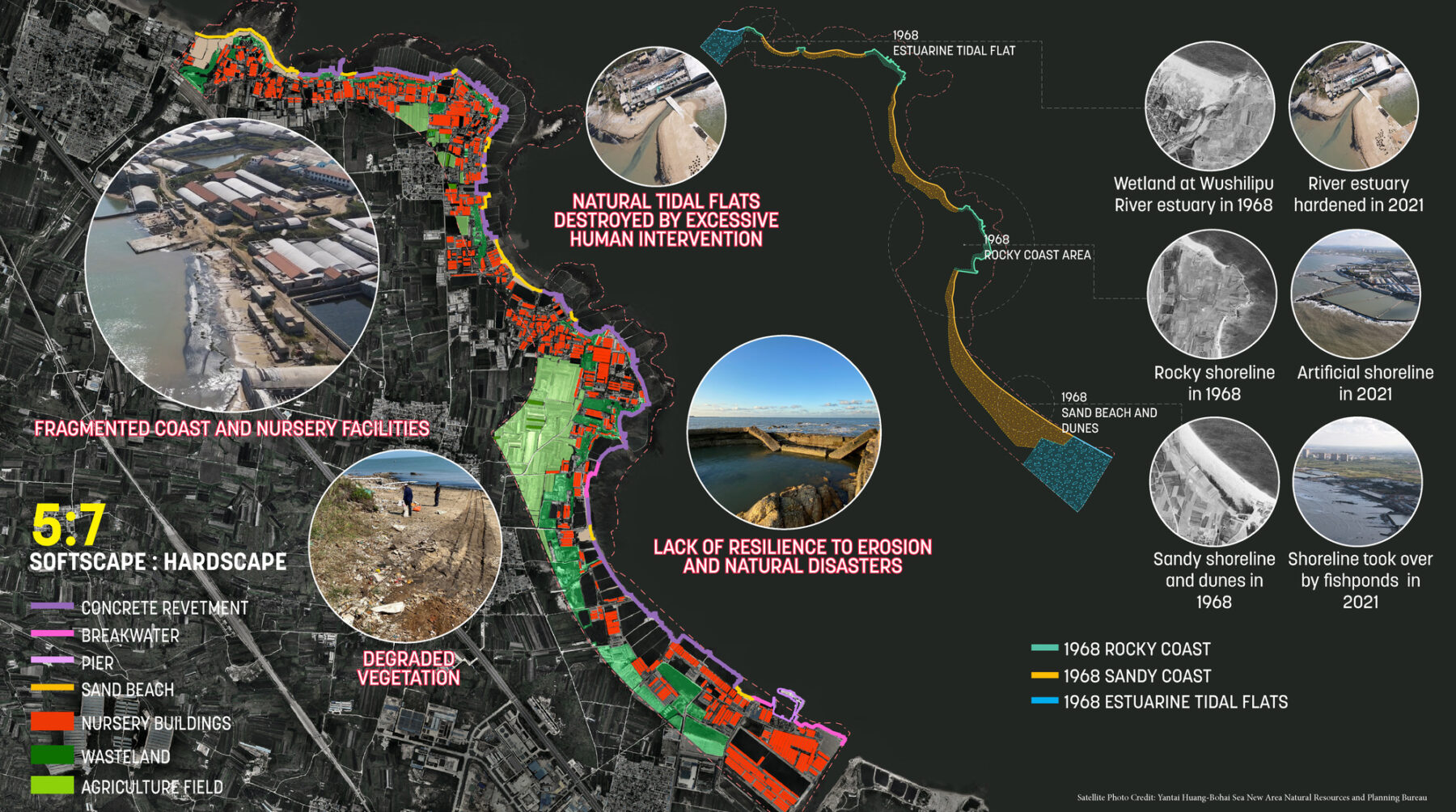
The nursery development has physically reshaped the coastline, resulting in inevitable ecological degradation, loss of habitats, and weak resilience
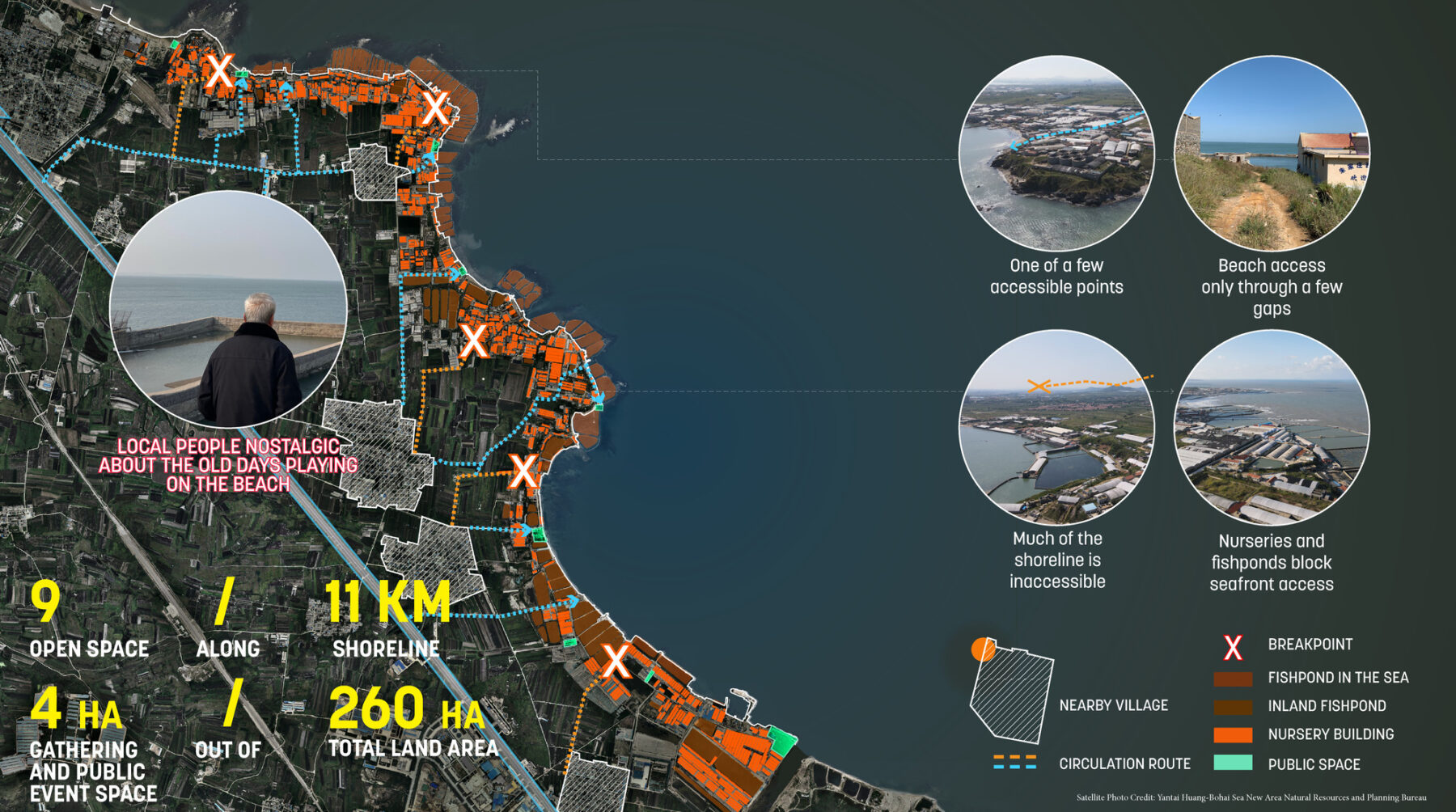
Existing nursery buildings and fishponds took over public spaces along the coastline and isolated local communities from the seafront
Interviews with villagers living nearby revealed that local people have mixed feelings about the aquaculture industry. On one hand, the aquaculture industry has become a culturally recognized aspect of the region for generations. On the other, the sea also holds a vital place in the hearts of local people, who are nostalgic for their past days socializing and playing at the beach.
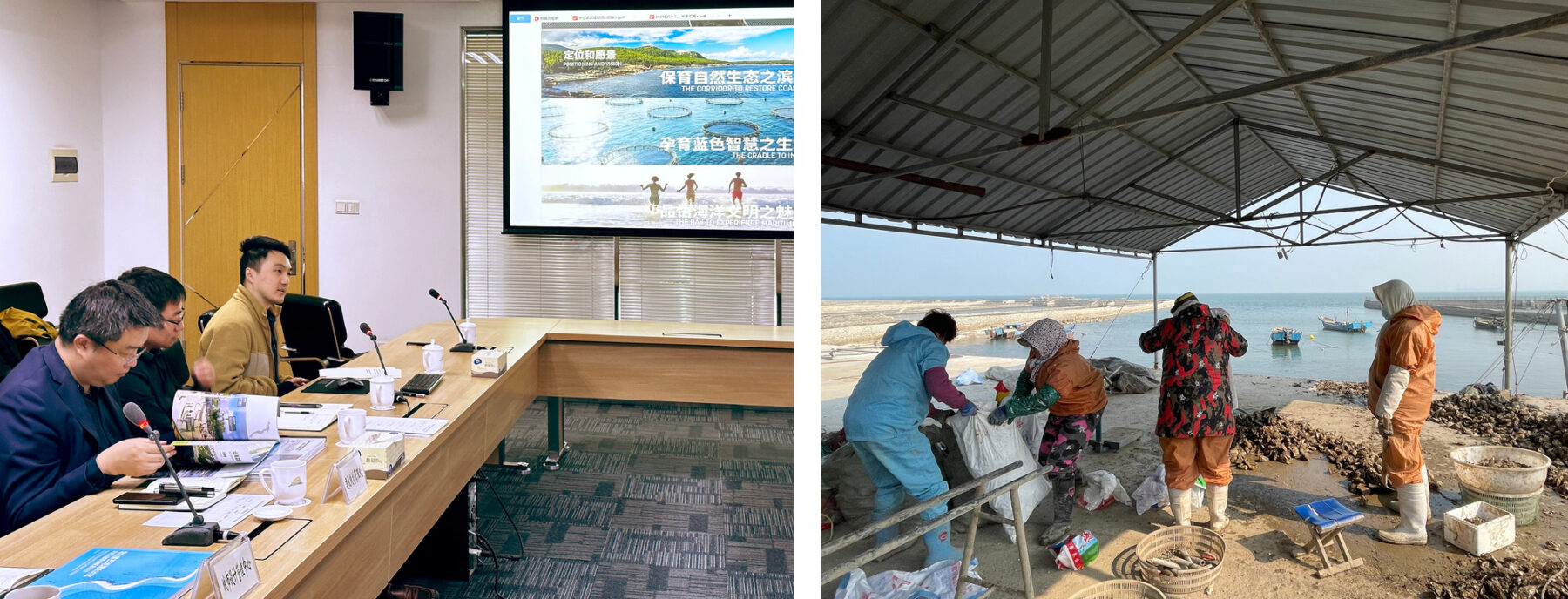
Community and stakeholders engaged in multiple design discussions
Sitting only about six feet above sea level, Huangshi Bay is highly susceptible to disaster from storm surges, coastal erosion, and flooding. Rising sea levels, along with extensive land reclamation that have resulted in the loss of wetlands and mudflats, will further weaken its coastal resilience.
The latest plan for urban development and marine nursery industry upgrades in the region offers opportunities for coastal rehabilitation in the bay. Sasaki’s coastal park master plan will be a pilot project in reimagining the coastline. Comprising a continuous trail system and six nodes of a composite ecological protection system, the project aims to leverage the place’s rich natural and cultural assets and rehabilitate the site from ecological, economic, and social perspectives.
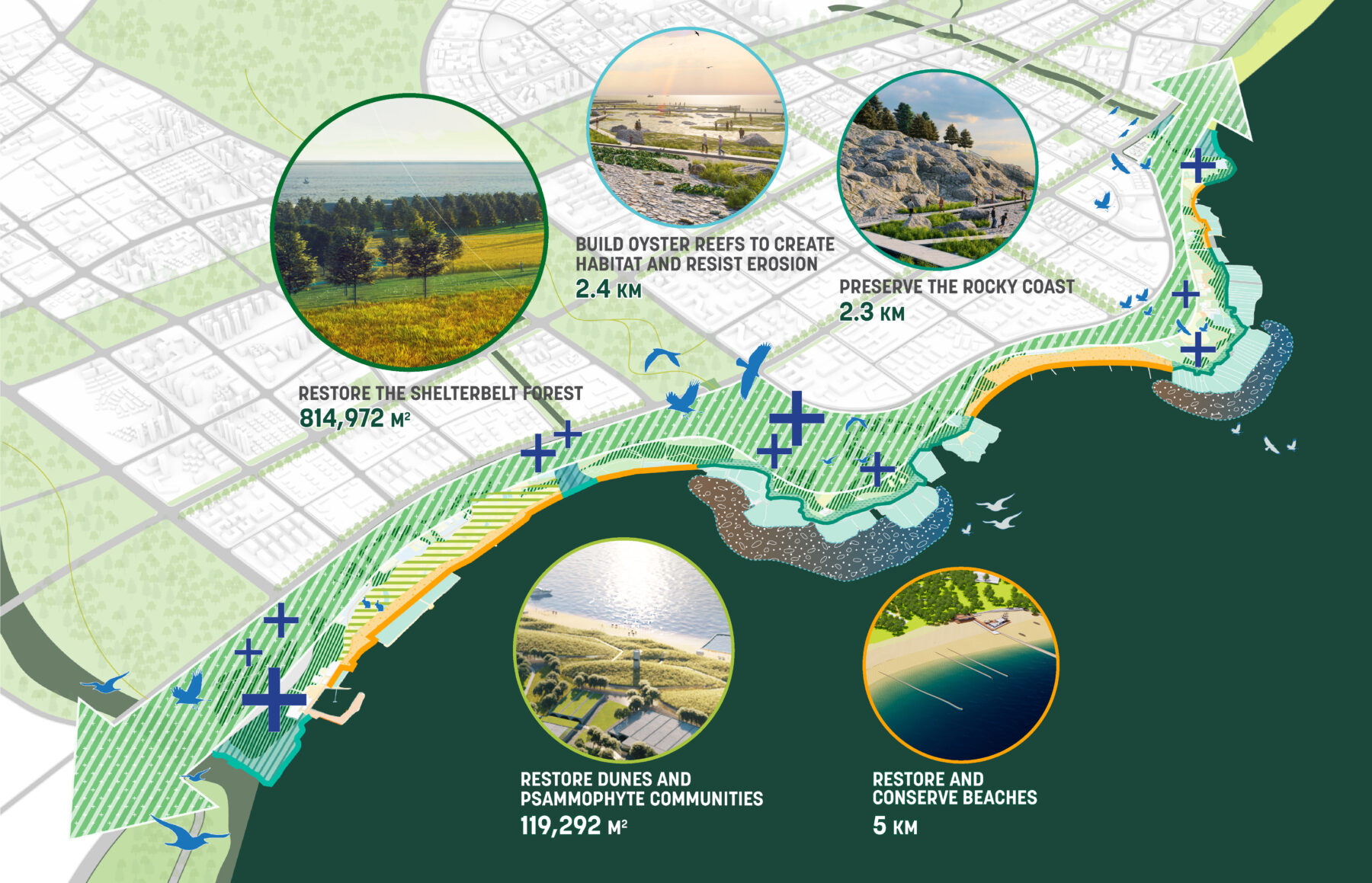
The plan establishes a resilient coastline against heavy storms and rising sea levels
The design proposes a rehabilitation of the natural shoreline ecosystem to improve the site’s resilience and mitigate climate change. The small-scale existing woodland will be enhanced into a mixed shelterbelt forest, with multiple species planted for coastal protection and carbon sequestration. Nitrogen-fixing plants will be introduced to improve the soil quality while existing structures, such as fish tanks and fishponds, will be conserved and transformed into site features. Materials from the demolition of existing buildings will be reused as sub-base for paving to limit the embedded carbon of the project.
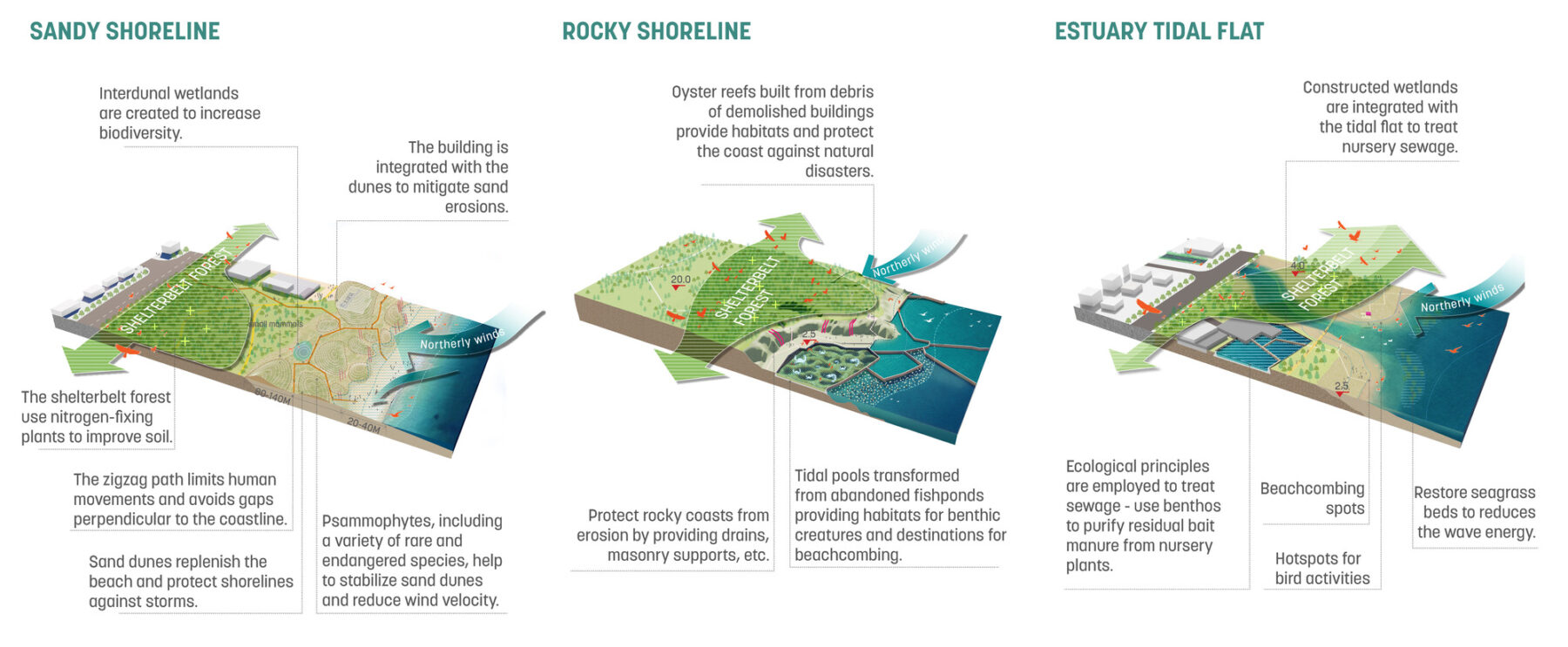
Based on specific shoreline conditions, various design approaches are employed to create diverse habitats and multi-layered protection
Based on the specific conditions of each shoreline segment, a variety of measures will be employed to increase ecological stability and resilience against storms and rising sea levels. Along the sandy shoreline, the beach-dune-shelterbelt forest section will be restored as a multi-layered protection system, offering diverse habitats and conserving endangered species. Along the rocky coastline, oyster reefs will be implemented to resist erosion and existing fishponds will be converted to tidal habitats for a variety of marine life. In the estuary tidal flats, seagrass beds will be restored to reduce wave energy and new wetlands will be constructed to purify tail water from nurseries.
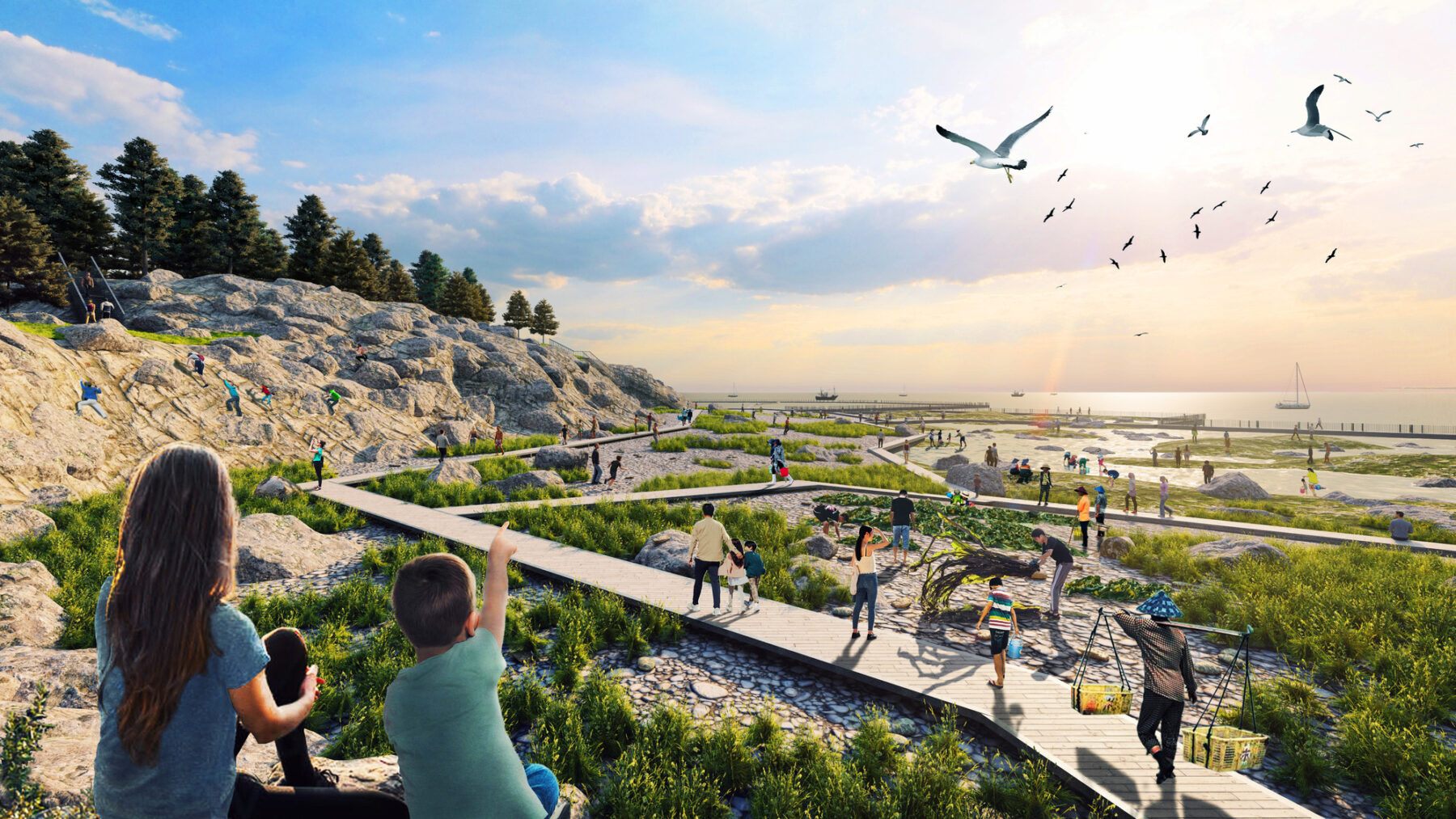
Locals sea-combing at tidal pools, which were originally fishponds and have now become habitat for marine species
The design endeavors to upgrade the aquaculture industry through reorganizing and centralizing nursery buildings, along with creating innovative nursery production models. To take advantage of the site’s unique natural assets and retain the fishermen’s sentimental connections with the sea while minimizing impacts to the shoreline, three compounding models will be introduced to ensure that efficient and environmentally friendly marine nurseries thrive on site.
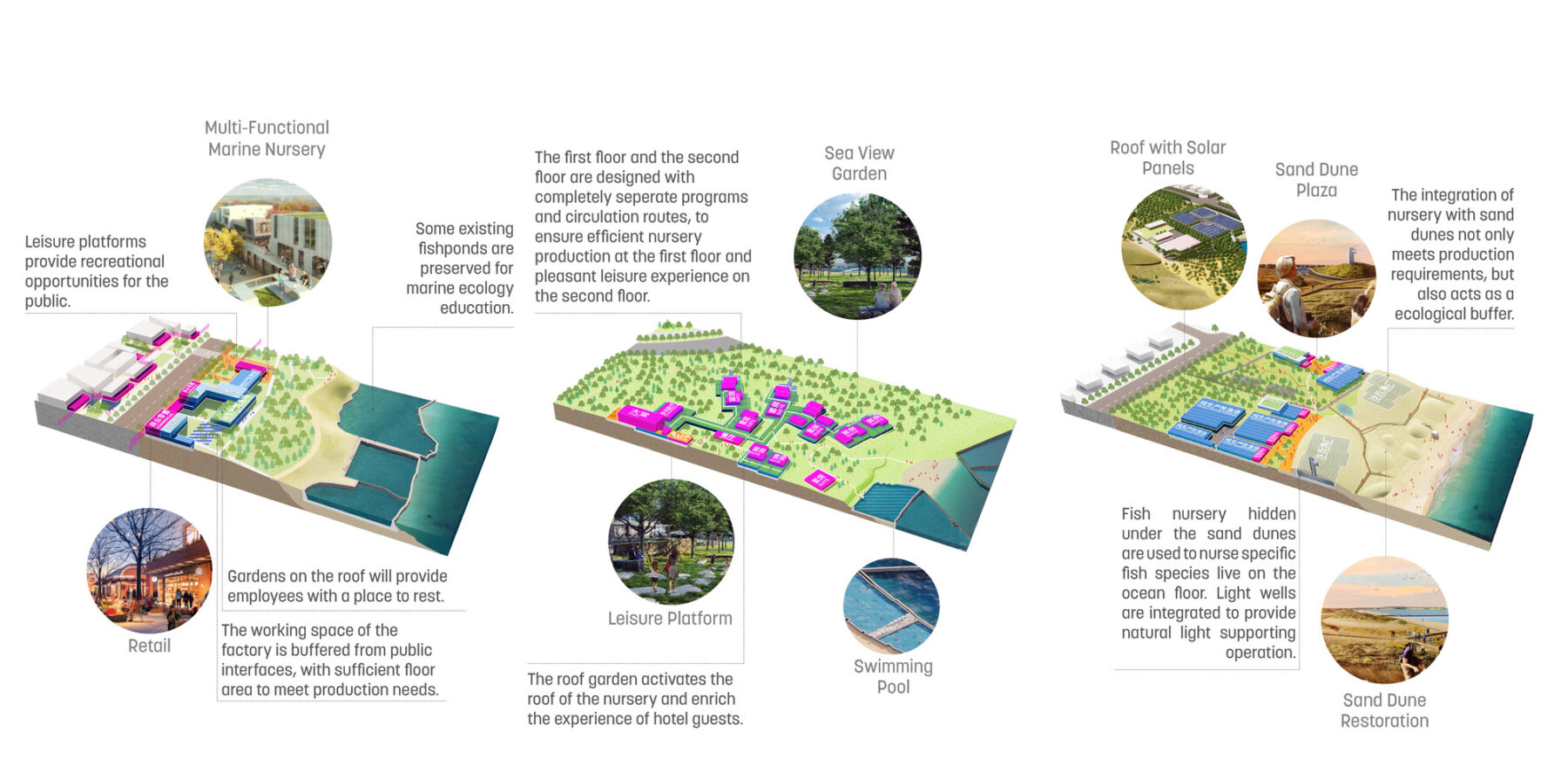
Nursery facilities are combined with public uses and integrated into terrain or sand dunes, reducing their environmental and visual impacts
Firstly, the design proposes to attach urban modules of public programs to nurseries – merging the outward urban interfaces of multiple public functions with inward production modules. For example, a marine-themed commercial retail space is set up on the street side of the production facility to create a vital entrance. The production modules are located on the inner side, which are partially open to the public and provide education opportunities. Additionally, the plan seeks to integrate with the existing terrain by laying production modules for marine species on lower levels while providing hotel or commercial uses on upper levels. Lastly, the design aims to encase nurseries in sand dunes for species with little demand for sunlight – this will not only allow them to operate in close vicinity to the sea without interfering with the dune landscape or habitats, but also help reduce the amount of sand needed and stabilize the dunes.
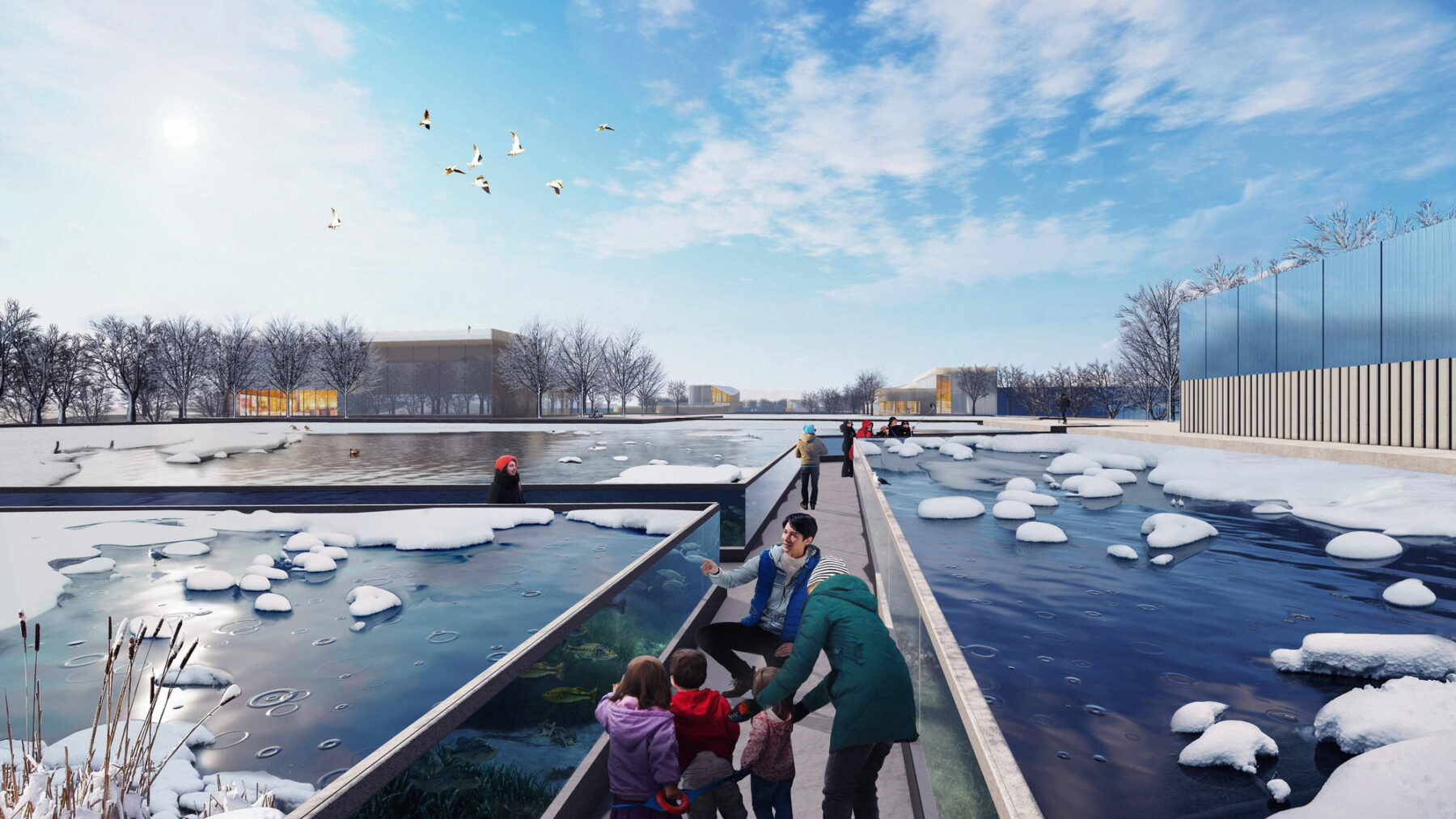
In the purification corridor, people can watch aquatic life up close and get a better understanding of nursery processes. Here, benthic animals and algae digest the residual bait and feces produced by fisheries, treating sewage ecologically while providing food for waterfowl.
Preserving the coast’s history and cultural heritage is crucial in maintaining the essence of the place. The design repurposes spaces once occupied by production facilities, serving as a reminder of the fishing community’s past while attracting people to the waterfront.
The proposed trail system with diverse public destinations and programs will allow ample access to the sea, provide an enriched coastal experience, and serve both local communities and visitors to the region in all seasons. Different itineraries connecting various destinations will enable visitors to experience the ecological, cultural, and industrial assets of the site.
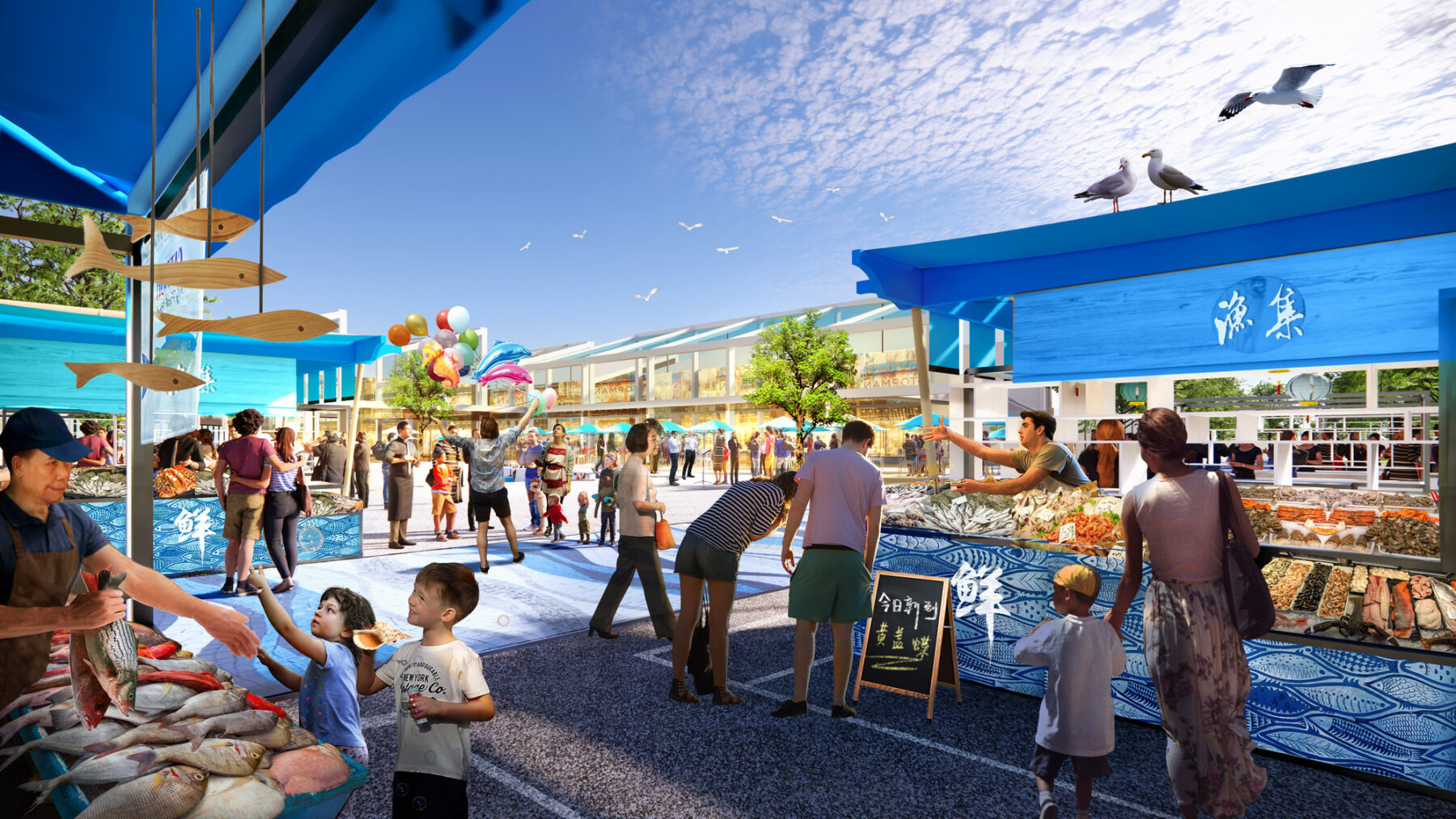
Experiencing the daily life of coastal villagers’ in the past, people can shop in the park’s characteristic fish market
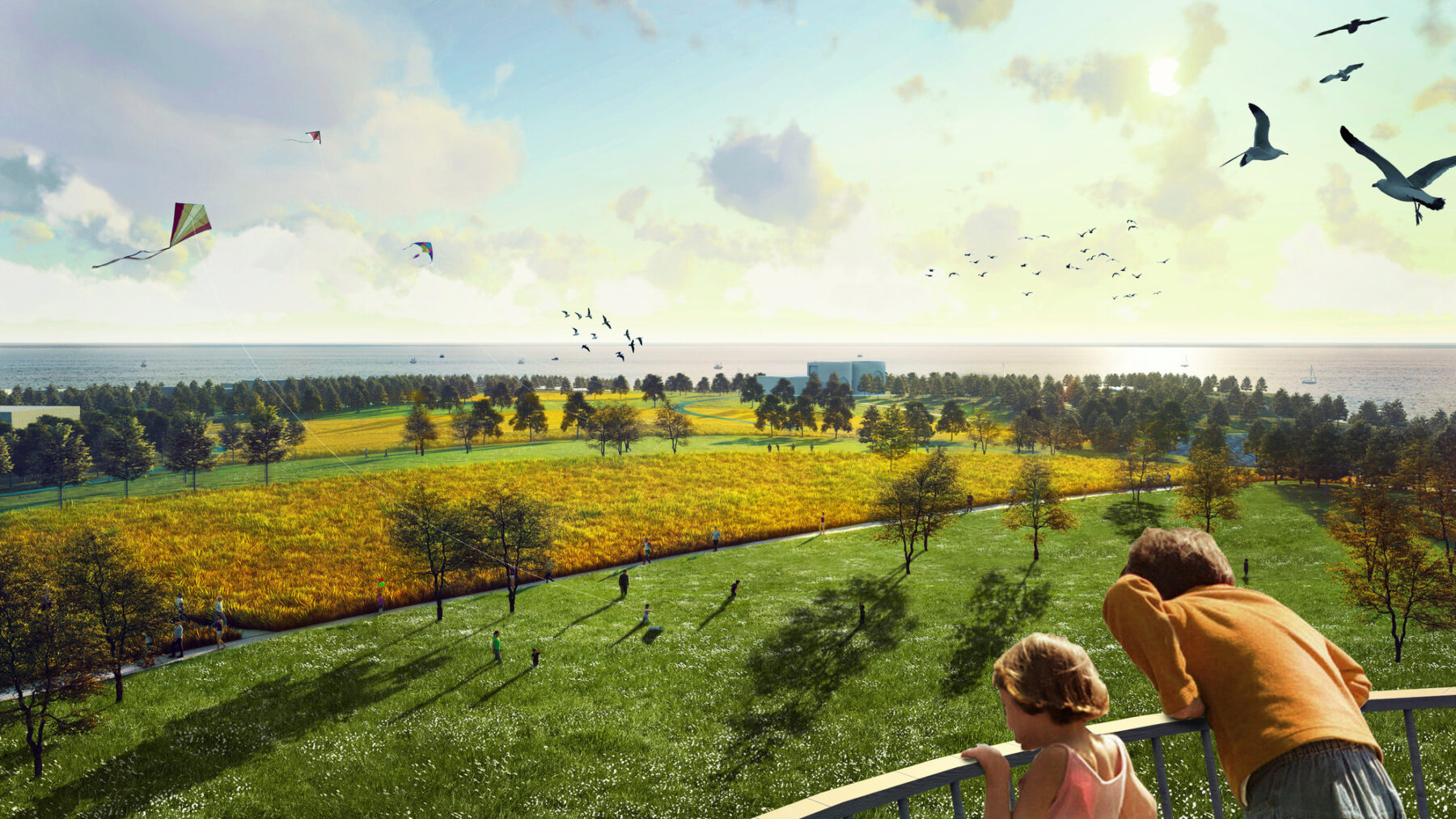
The main path connects the city and the seaside, and the scene changes along the path, providing a pleasant slow traffic experience
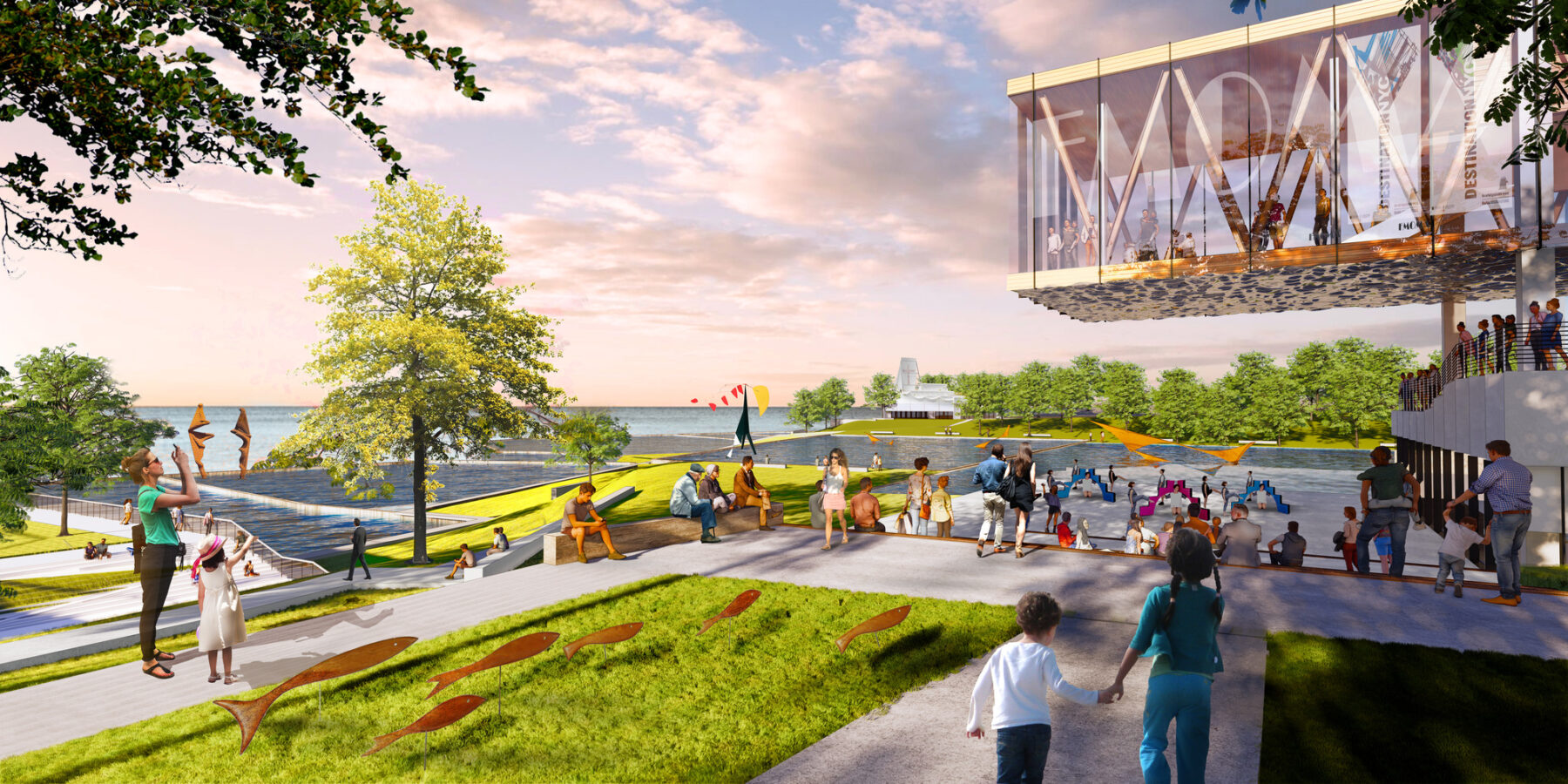
The design creates unique destinations celebrating the site’s coastal characters and offers year-round public programs for all
Experiencing the daily life of coastal villagers’ in the past, people can shop in the park’s characteristic fish market
The main path connects the city and the seaside, and the scene changes along the path, providing a pleasant slow traffic experience
The design creates unique destinations celebrating the site’s coastal characters and offers year-round public programs for all
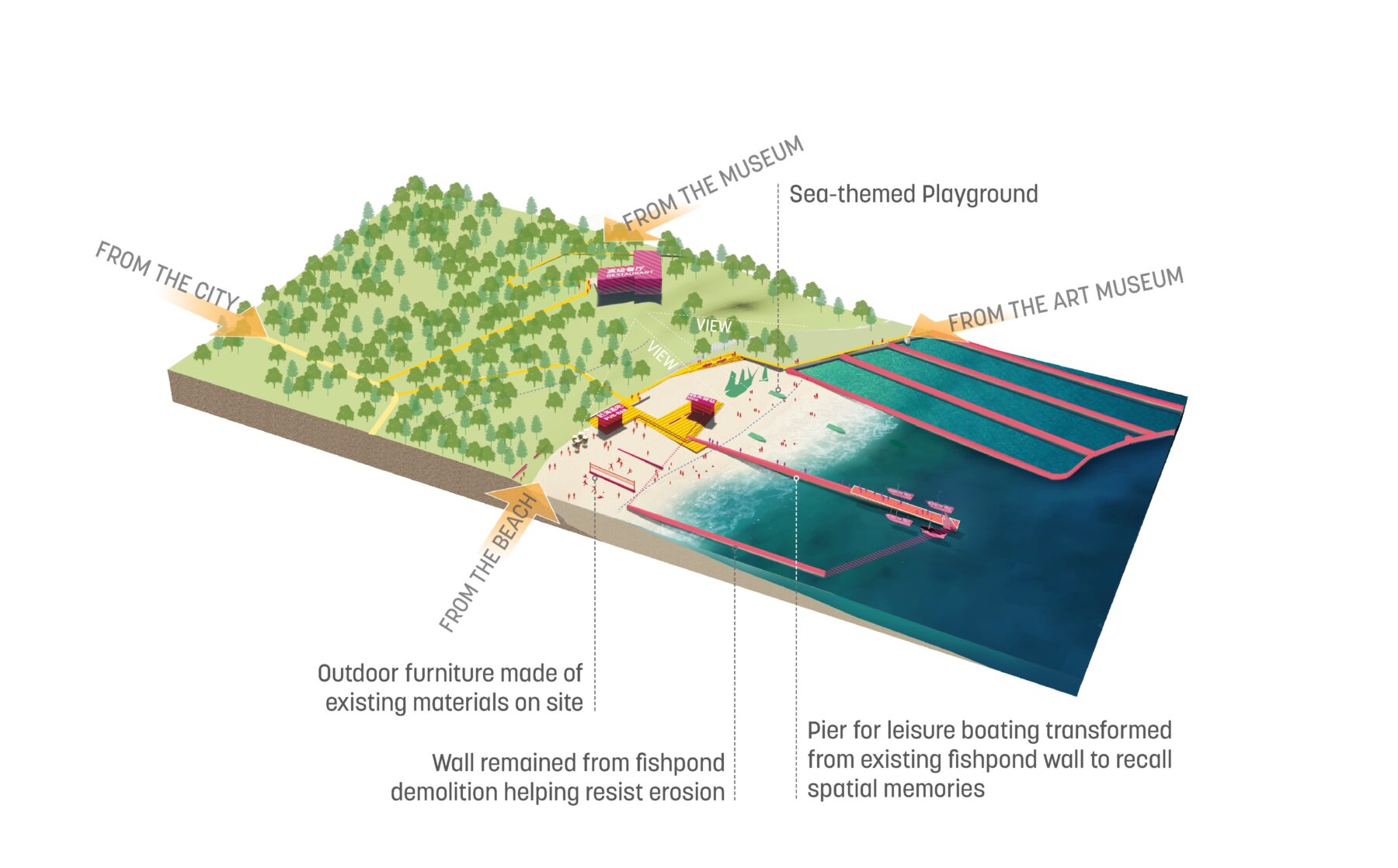
Pier revitalization
Some existing structures will be adapted for public uses, recalling the fishing community’s seafront life. The design proposes renovating five existing piers and transforming them into coastal hubs that host seaside bars and other related facilities. Existing fishponds will be reused and reprogrammed as mirror ponds to celebrate the site’s aquaculture history and embrace new possibilities. To activate the seafront, sea-combing, enabled by ecological restoration, will also be brought back at several spots.
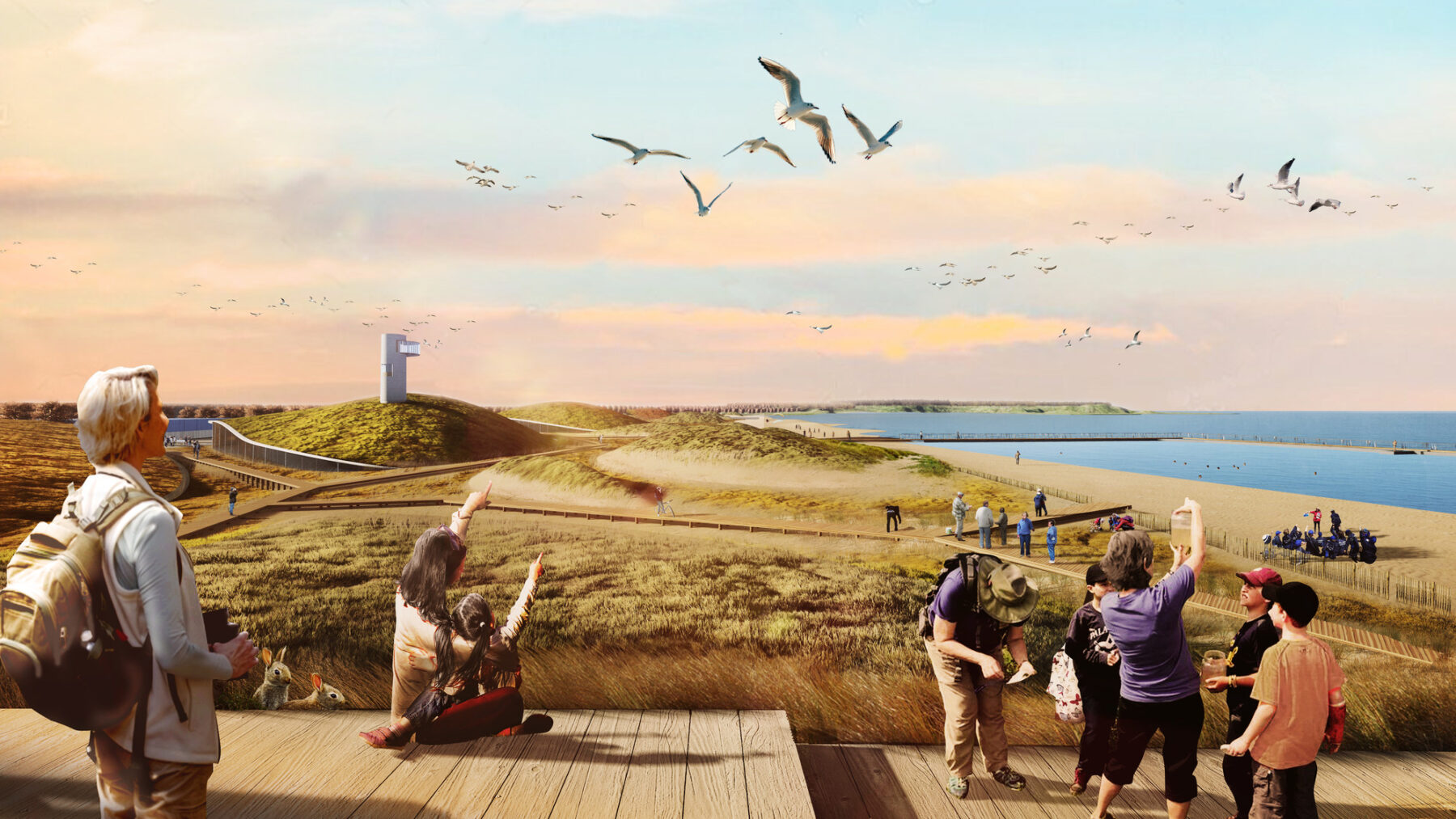
Huangshi Bay coastal park will be a new paradigm for the working seafont
The Huangshi Bay Coastal Park Master Plan is a pioneering effort in creating a new model of working seafronts that combines ecology, production, and leisure. Its attempt in bridging human industry and while restoring the natural coastline sets a new sustainable standard for coastlines in China.